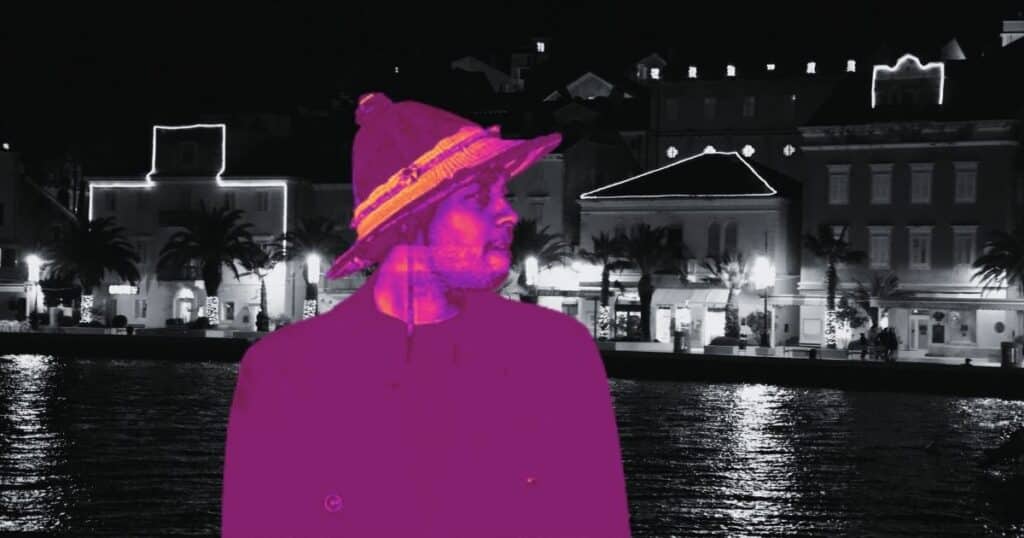Hip-hop has become a dominant music genre in Mali, with its popularity surpassing even that of traditional Malian music. The country’s youth, who make up 60% of the population, have grown up listening to rap, making it an integral part of their culture. Mali is home to a vibrant hip-hop scene, with artists using the genre to express their views on social, political, and economic issues.
Malian hip-hop has a unique sound that blends traditional Malian music with modern hip-hop beats. The genre has become a powerful tool for social commentary, with artists using their music to address issues such as corruption, poverty, and political instability. Some of Mali’s most popular hip-hop artists include Amkoullel, Tal B, and Iba One, who have gained international recognition for their music.
Despite the challenges faced by the Malian music industry, hip-hop has continued to thrive in the country. The genre has become an important means of self-expression for Malian youth, who use it to share their experiences and perspectives with the world. As Mali continues to grapple with social and political challenges, hip-hop remains a powerful force for change and progress.
Origins and History of Hip-Hop in Mali
Early 1990s: Birth of Malian Hip-Hop
Hip-hop music first arrived in Mali in the early 1990s, following the country’s transition to democracy. Malian hip-hop artists were inspired by the genre’s origins in the United States and the social and political messages it conveyed.
The first Malian hip-hop group was Tata Pound, founded in 1992 by Amkoullel L’enfant Peulh and Master Soumy. The group’s music focused on issues such as poverty, unemployment, and corruption, and their lyrics were written in both French and Bambara.
Other early Malian hip-hop groups included Iba One and King KJ, who emerged in the mid-1990s. These artists continued to use hip-hop as a tool for political and social commentary, addressing issues such as AIDS, education, and democracy.
Influence of Democracy
The rise of democracy in Mali in the early 1990s had a profound impact on the country’s hip-hop scene. The newfound freedom of expression allowed Malian artists to explore new themes and express themselves more freely.
Malian hip-hop artists also drew inspiration from the West African griot tradition, which emphasizes storytelling and social commentary. This influence can be heard in the poetic and lyrical nature of Malian hip-hop.
Today, hip-hop is the most popular music genre in Mali, with artists such as Mylmo, Iba One, and Master Soumy enjoying widespread popularity. Malian hip-hop continues to address important social and political issues, including poverty, corruption, and the ongoing conflict in the country’s north.
Prominent Figures in Malian Hip-Hop
Tata Pound: Pioneers of Malian Hip-Hop
Tata Pound is often considered the pioneers of Malian hip-hop. The group was formed in the early 1990s and was one of the first to introduce hip-hop to the Malian music scene. Tata Pound’s music was heavily influenced by traditional Malian music and the group’s lyrics often dealt with social and political issues. They were one of the first Malian hip-hop groups to achieve international recognition and their music continues to be influential today.
Amkoullel: The Griot Rapper
Amkoullel is a rapper from Mali who is often referred to as the “Griot Rapper”. His music is heavily influenced by the griot tradition, which is a West African storytelling tradition that dates back centuries. Amkoullel’s music often deals with issues such as poverty, corruption, and social injustice. He is known for his powerful lyrics and his ability to connect with his audience.
Mylmo: The Voice of Malian Youth
Mylmo is a rapper from Mali who is often referred to as the “Voice of Malian Youth”. His music is popular among young people in Mali and his lyrics often deal with issues that affect them, such as poverty, unemployment, and social inequality. Mylmo is known for his energetic performances and his ability to connect with his audience.
Overall, Malian hip-hop has a rich history and has produced many talented artists over the years. While Tata Pound, Amkoullel, and Mylmo are just a few of the prominent figures in Malian hip-hop, they have all played an important role in shaping the genre and making it what it is today. The influence of Malian hip-hop can be seen not just in Mali, but throughout the African continent and beyond.
Influence of Traditional Malian Music
Malian hip-hop has been heavily influenced by traditional Malian music, particularly the music of the griots and Tuaregs. The griots are a West African caste of musicians and storytellers who are responsible for preserving the history and culture of their people through song and oral tradition. Meanwhile, the Tuaregs are a nomadic people who inhabit the Saharan regions of Mali and are known for their distinctive music that often features the use of the guitar.
Role of Griot and Tuareg Music
The influence of griot and Tuareg music can be heard in the lyrical content, rhythms, and melodies of Malian hip-hop. Griot music often features call-and-response vocals, which have been incorporated into the structure of many Malian hip-hop songs. Additionally, griot music often tells stories of the past and present struggles of the Malian people, which has also been reflected in the lyrics of Malian hip-hop.
Similarly, Tuareg music has had a significant impact on the sound of Malian hip-hop. The use of the guitar, which is a prominent instrument in Tuareg music, has been incorporated into the production of many Malian hip-hop tracks. The guitar is often used to create a distinctive, hypnotic sound that is characteristic of Tuareg music.
Incorporation of Traditional Instruments
In addition to the guitar, Malian hip-hop has also incorporated other traditional instruments, such as the kora, a 21-stringed harp-lute, and the ngoni, a stringed instrument similar to a lute. These instruments are often used to create a fusion of traditional and modern sounds, which has become a defining characteristic of Malian hip-hop.
Overall, the influence of traditional Malian music on hip-hop has resulted in a unique sound that is both modern and deeply rooted in the history and culture of Mali. By incorporating the rhythms, melodies, and instruments of traditional Malian music, Malian hip-hop has created a sound that is distinctly Malian and has gained a global following.
Hip-Hop and Politics in Mali
Hip-Hop as a Tool Against Corruption
Hip-hop has emerged as a powerful tool against corruption in Mali. Malian rappers have used their music to speak out against corrupt politicians and their illegal activities. Through their lyrics, they have exposed the corrupt practices of politicians and have called for accountability and transparency in governance.
One of the most prominent examples of this is the song “An ka wili” by Amkoullel. The song denounces the corruption of politicians and calls for a change in the political system. The song was released in 2012, a year marked by political upheavals in Mali, including a military coup that toppled President Amadou Toumani Touré.
Impact of Political Crises
Political crises have had a significant impact on the development of hip-hop in Mali. The military coup in 2012 led to a period of political instability and uncertainty. The interim president Dioncounda Traoré struggled to restore full democracy, and the country was plunged into a state of chaos.
During this period, Malian rappers continued to use their music to call for change and to speak out against corruption. They also used their music to express their frustration with the political system and the lack of progress in the country.
Despite the challenges posed by political crises, hip-hop has continued to thrive in Mali. The genre has become a powerful voice for the youth, who make up the majority of the population. Hip-hop has become a platform for young people to express their views and to demand change in their country.
In conclusion, hip-hop has emerged as a powerful tool against corruption and political instability in Mali. Malian rappers have used their music to speak out against corrupt politicians and to call for accountability and transparency in governance. Despite the challenges posed by political crises, hip-hop has continued to thrive in Mali and has become a powerful voice for the youth.
Hip-Hop in Contemporary Malian Society
Hip-Hop Groups and Collectives
Hip-hop has become an integral part of contemporary Malian society, with various groups and collectives emerging in recent years. One such group is Les Escrocs, which was formed in 1999 and has since become one of the most popular hip-hop groups in Mali. They have released several albums and have collaborated with other Malian artists to produce music that speaks to the struggles and aspirations of the Malian youth.
Another notable collective is Les Sofas de la République, which was formed in 2002 and has also gained a significant following in Mali. They have released several albums and have been praised for their socially conscious lyrics and their ability to address political and social issues in their music.
Malian Hip-Hop and the Global Scene
Malian hip-hop has also gained recognition on the global scene, with several artists making waves in the international music industry. One such artist is Amadou Bagayoko, who is one half of the Grammy-winning duo Amadou & Mariam. Bagayoko started his career as a hip-hop artist in Mali before transitioning to a more Afro-pop sound.
Other Malian hip-hop artists who have gained international recognition include Amkoullel, who has been hailed as one of the pioneers of hip-hop in Mali, and Master Soumy, who has collaborated with international artists such as Akon and Wyclef Jean.
Malian hip-hop has also been recognized by international music festivals, with several Malian hip-hop groups and artists being invited to perform at events such as the Festival on the Niger and the Festival au Désert.
In conclusion, hip-hop has become an important part of contemporary Malian society, with various groups and collectives emerging and gaining significant followings. Malian hip-hop has also gained recognition on the global scene, with several artists making waves in the international music industry.
Challenges and the Future of Hip-Hop in Mali
Hip-hop in Mali has become a powerful tool for the youth to express themselves and address social, political, and economic issues. However, the genre has faced several challenges in the country, including a humanitarian crisis, limited independent media, and communication infrastructure.
One of the significant challenges facing hip-hop in Mali is the ongoing humanitarian crisis in the northern part of the country. The conflict has resulted in a significant displacement of people, loss of lives, and destruction of infrastructure. As a result, many young people have been forced to flee their homes, leaving behind their dreams of pursuing music careers.
Another challenge is the limited independent media and communication infrastructure in Mali. The government controls most of the media outlets, making it difficult for independent artists to get their music heard. This has led to a lack of exposure for many talented musicians, hindering their ability to reach a wider audience.
Despite these challenges, the future of hip-hop in Mali looks promising. The genre has become a powerful tool for the youth to express themselves and address social, political, and economic issues. The Malian youth has embraced hip-hop culture, and many talented artists are emerging, showcasing their skills and creativity.
In conclusion, while hip-hop in Mali faces several challenges, it remains a powerful tool for the youth to express themselves and address social, political, and economic issues. The future of the genre looks promising, and with increased support for independent artists and improved communication infrastructure, hip-hop in Mali can continue to grow and thrive.
Frequently Asked Questions
Who are some notable hip-hop artists from Mali?
Mali has a vibrant hip-hop scene with many talented artists. Some notable names include Amkoullel, Iba One, Master Soumy, and Mylmo, among others. These artists have gained popularity both within Mali and internationally.
What is the history of hip-hop in Mali?
Hip-hop emerged in Mali in the 1990s, alongside the country’s transition to democracy. The proliferation of private radio stations broadcasting this style of music contributed to its exponential growth. Television, however, remained the chosen media for most musicians starting a career.
How has hip-hop influenced Malian culture?
Hip-hop has had a significant impact on Malian culture, particularly among the youth. It has provided a platform for young people to express themselves and address social issues such as poverty, corruption, and political instability. The genre has also helped to promote cultural exchange and understanding within Mali and beyond.
What are some common themes in Malian hip-hop?
Many Malian hip-hop artists address social and political issues in their music. Poverty, corruption, and political instability are common themes. Others use their music to celebrate Malian culture and promote unity and peace.
How has the Mali rap scene evolved over time?
The Mali rap scene has evolved significantly since its inception in the 1990s. The genre has become increasingly popular, with hip-hop concerts and festivals drawing large crowds. The rise of social media has also allowed artists to reach a wider audience and connect with fans.
What impact has Malian hip-hop had on the global music industry?
Malian hip-hop has gained recognition on the global stage, with artists such as Amkoullel and Iba One performing at international events and collaborating with artists from other countries. The genre has helped to put Mali on the map as a hub of musical creativity and innovation.




